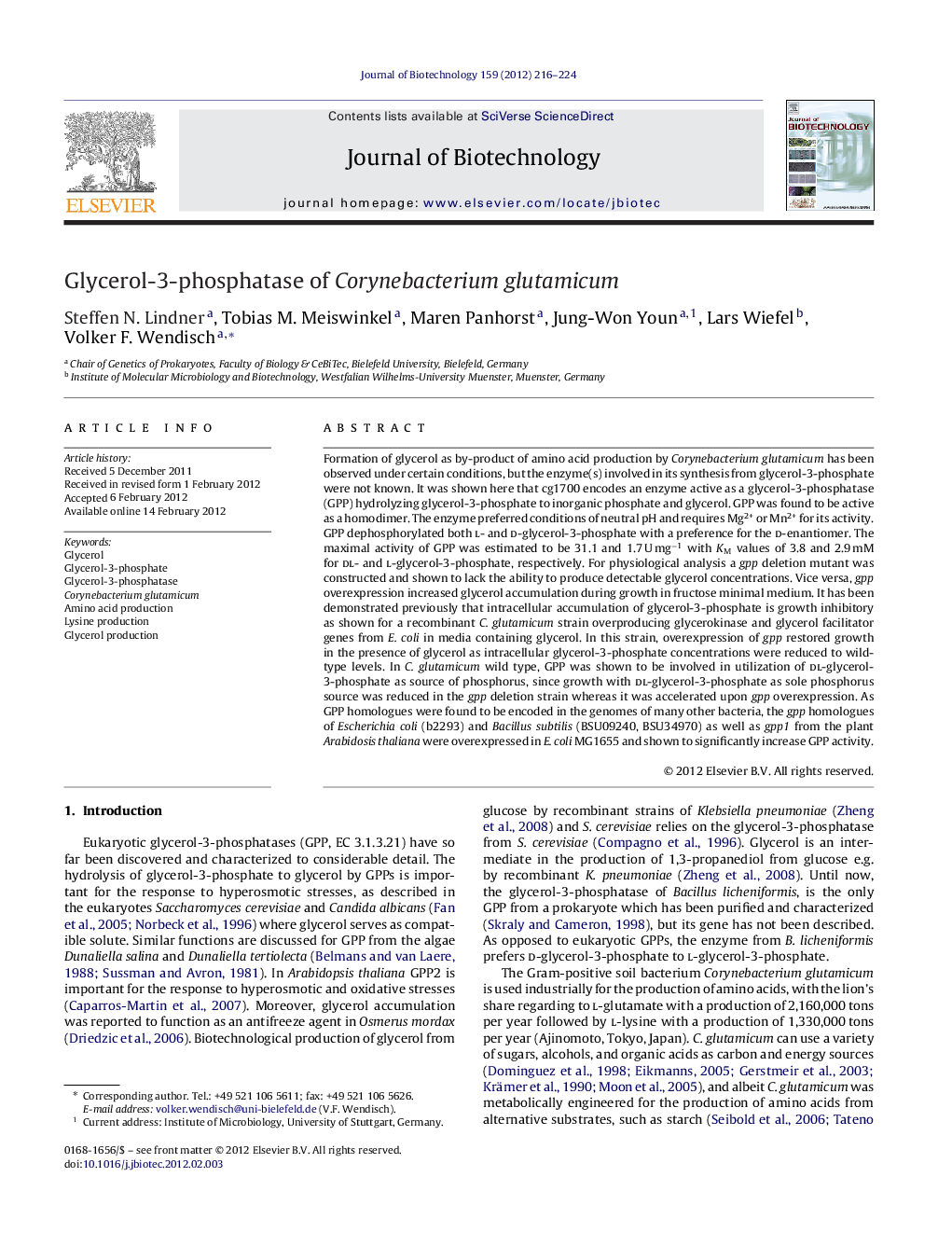| Article ID | Journal | Published Year | Pages | File Type |
|---|---|---|---|---|
| 23783 | Journal of Biotechnology | 2012 | 9 Pages |
Formation of glycerol as by-product of amino acid production by Corynebacterium glutamicum has been observed under certain conditions, but the enzyme(s) involved in its synthesis from glycerol-3-phosphate were not known. It was shown here that cg1700 encodes an enzyme active as a glycerol-3-phosphatase (GPP) hydrolyzing glycerol-3-phosphate to inorganic phosphate and glycerol. GPP was found to be active as a homodimer. The enzyme preferred conditions of neutral pH and requires Mg2+ or Mn2+ for its activity. GPP dephosphorylated both l- and d-glycerol-3-phosphate with a preference for the d-enantiomer. The maximal activity of GPP was estimated to be 31.1 and 1.7 U mg−1 with KM values of 3.8 and 2.9 mM for dl- and l-glycerol-3-phosphate, respectively. For physiological analysis a gpp deletion mutant was constructed and shown to lack the ability to produce detectable glycerol concentrations. Vice versa, gpp overexpression increased glycerol accumulation during growth in fructose minimal medium. It has been demonstrated previously that intracellular accumulation of glycerol-3-phosphate is growth inhibitory as shown for a recombinant C. glutamicum strain overproducing glycerokinase and glycerol facilitator genes from E. coli in media containing glycerol. In this strain, overexpression of gpp restored growth in the presence of glycerol as intracellular glycerol-3-phosphate concentrations were reduced to wild-type levels. In C. glutamicum wild type, GPP was shown to be involved in utilization of dl-glycerol-3-phosphate as source of phosphorus, since growth with dl-glycerol-3-phosphate as sole phosphorus source was reduced in the gpp deletion strain whereas it was accelerated upon gpp overexpression. As GPP homologues were found to be encoded in the genomes of many other bacteria, the gpp homologues of Escherichia coli (b2293) and Bacillus subtilis (BSU09240, BSU34970) as well as gpp1 from the plant Arabidosis thaliana were overexpressed in E. coli MG1655 and shown to significantly increase GPP activity.
► We analysed glycerol formation as by-product of C. glutamicum. ► We identify a gene for a prokaryotic glycerol-3-phosphatase. ► We show that gene deletion abolished glycerol formation. ► Glycerol-3-phosphatase is involved in utilization of glycerol-3-phosphate as source of phosphorus. ► Glycerol-3-phosphatase homologues were found to be encoded in the genomes of many other bacteria.
